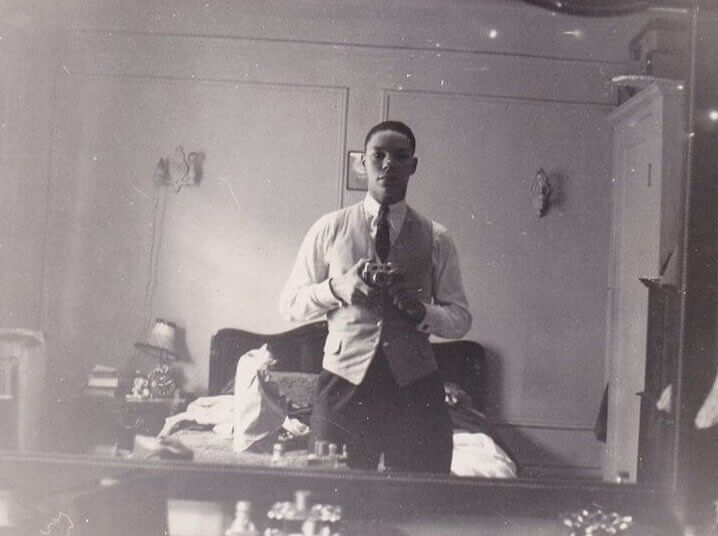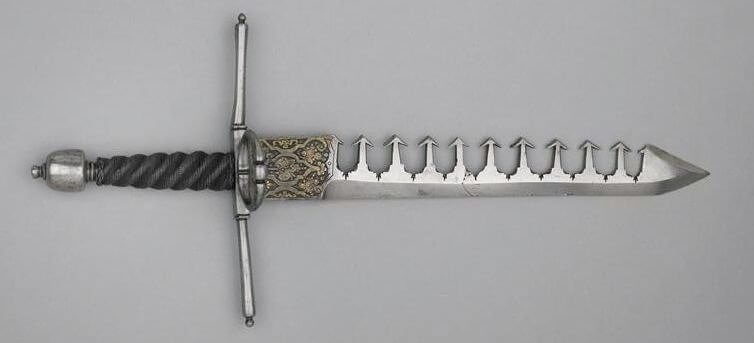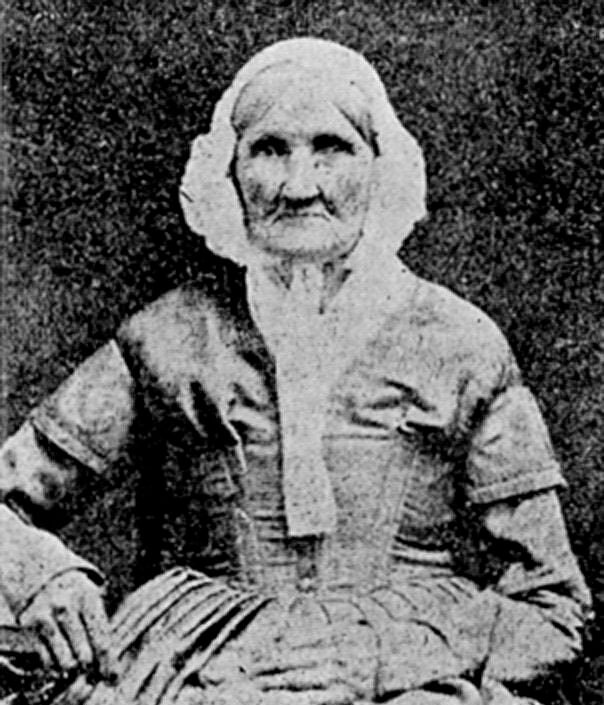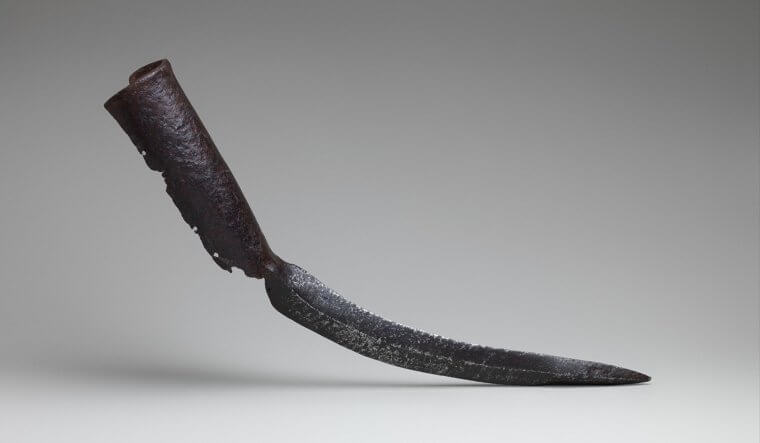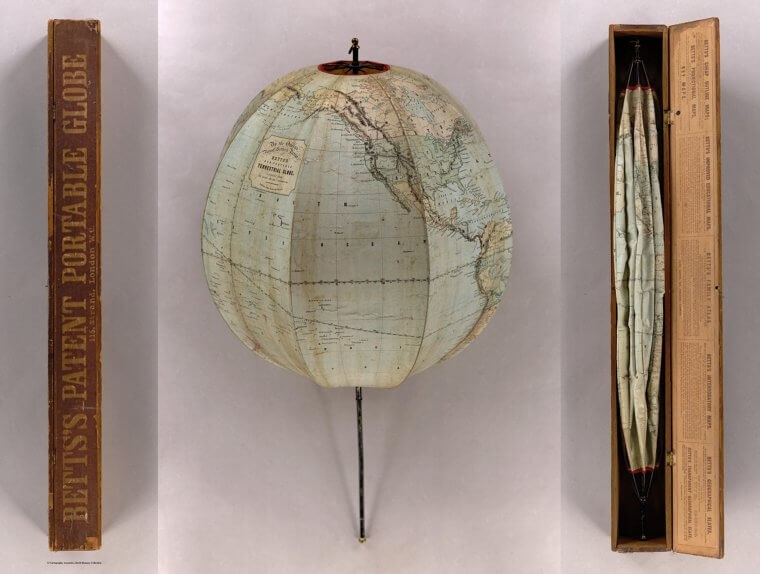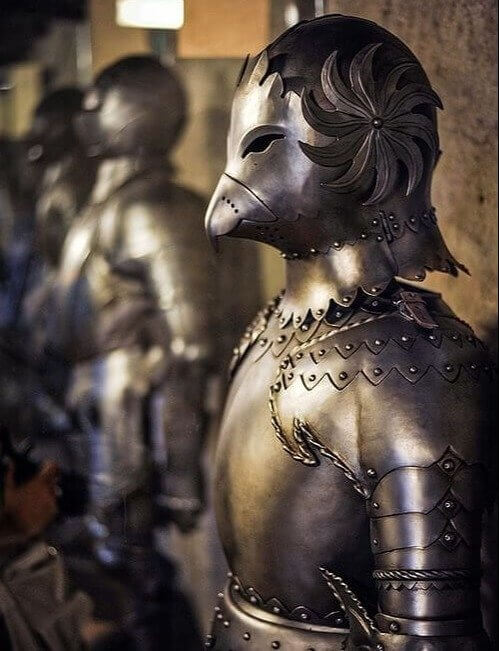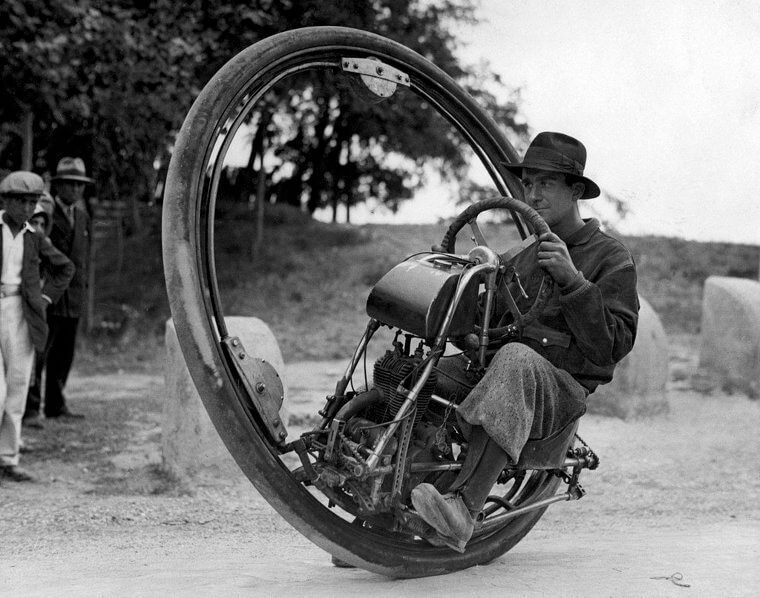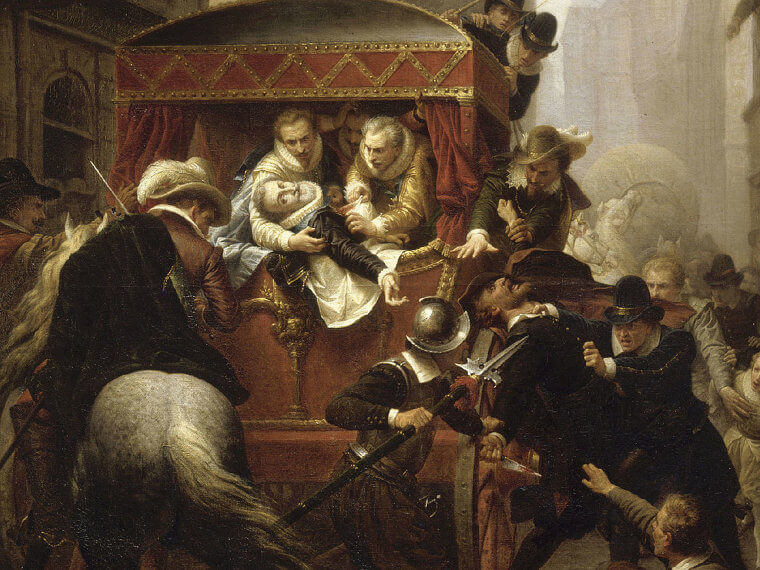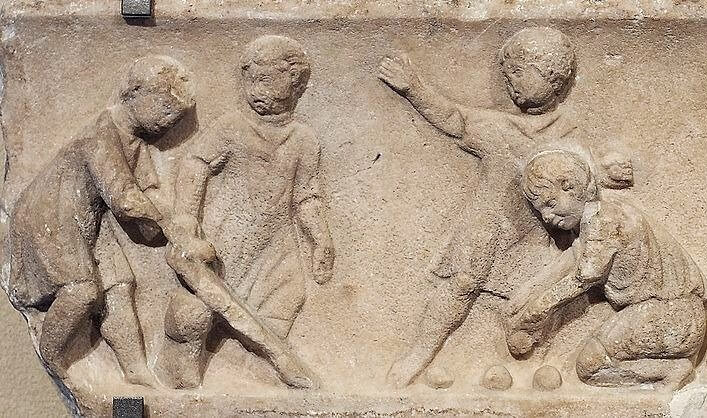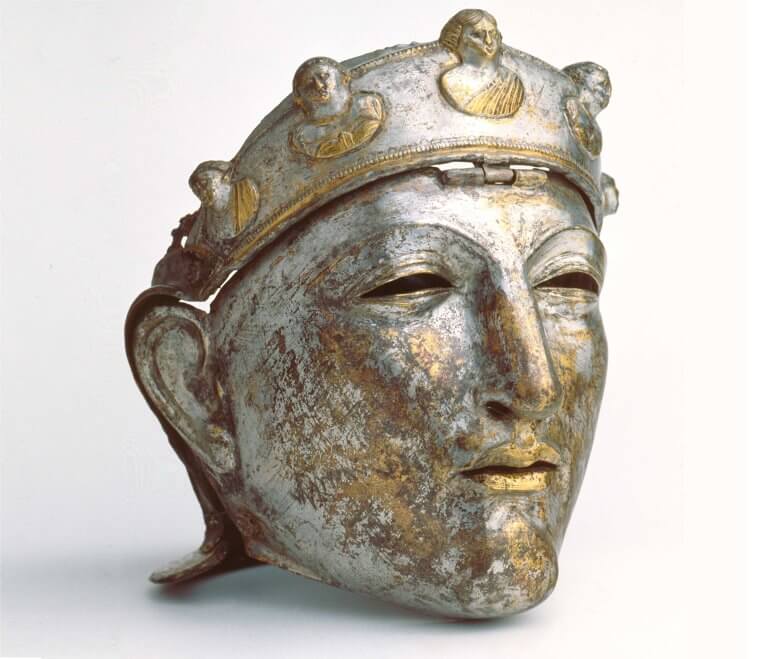This article was originally published on TheFunPost
George Washington's Teeth Were Not Made of Wood After All
We've all heard that George Washington had bad teeth, like so many in his time. We learned he was forced to wear wooden dentures. That always sounded pretty uncomfortable. But was it true? As it turns out, not really. The first American president had plenty of fake teeth in his lifetime, but they were made from more delicate materials. Here is one set made from elephant ivory and walrus tusks.
Later, he upgraded to hippo teeth and gold. While these were all scientifically advanced back then, they hurt to use and changed the way the president looked and talked. We're so glad that we have modern dentistry!
When Cambridge University Banned Dogs, This Person Got Creative
Cambridge University is one of the fanciest options around when it comes to British education. Apparently, it's a bit stuffy on campus, too. The institution banned dogs from living quarters. But the master of one of its internal colleges, Roger Mosey, was already quite happy with his pet. He had a Basset Hound named Yo-Yo, and had no plans to give it up. The solution was clear: Claim it was a very large cat.
Cats were allowed, as unfair as that sounds. When he made his formal request to the council, they granted it. Today, Yo-Yo the feline is a beloved part of campus life!
See if You Recognize This Secretary of State in a Youthful Selfie
This statesman famously said: "I was born in Harlem, raised in the South Bronx, went to public school, got out of public college, went into the Army, and then I just stuck with it." Just who is this handsome young man, pictured here? If we told you that it is actually Colin Powell, you'll have to believe us. We know he looks totally different as a young man, but that's true for all of us.
Colin has since passed on, but he posted this throwback in recent years. Doesn't he look dapper? He captioned it: "I was doing selfies 60 years before you Facebook folks."
This Left Hand Dagger From 1600's Italy Was Designed This Way for a Reason
Before guns were common, people shanked each other regularly with knives. But a butter knife just wouldn't do, when it came to serious hand-to-hand combat. Here, we see a specialized blade from 1600's Italy. It's called a parrying dagger, and it had a pretty important role in a fight. While the right hand was busy sword fighting, this knife was held by the left hand to block sword swipes.
You can see all the slots to catch a blade, unlike a normal knife. And it's lighter than a clunky shield. The innovation freed the right hand to stab the opponent.
This Woman Is Probably the First Face Ever Caught on Film
Photography has been around since 1816, believe it or not. Inventor Nicéphore Niépce made a small version with a piece of paper coated with silver chloride. When exposed to light, it darkened. From there, the innovation began. Over the next few decades, the device became much more advanced, and it all culminated in this exciting photo. This is Hannah Stilley, an old lady in 1840. Born in 1746, she is thought to be the earliest born subject that we have on film.
The quality of this portrait is nothing like our pictures today. But given how long ago this was, we are impressed. It's at least as good as a painting, and it happened in an instant!
This Is How Airline Reservations Were Taken Before Computers
We use computers for just about everything we do these days. But there was a time when the simplest of tasks were not yet automated by machines, and people had to do the dirty work. An airline office was a complicated one, because all flights had to be reserved by hand. Imagine doing this today, with millions of travelers a day. It would be madness! But in the early era, there were considerably fewer flyers.
Here, we see two professional ladies in 1945. They are doing their best to take calls and assign seats on a giant board that kept track of flights for the next month. After WWII, the first automation system would be invented by American Airlines.
America Designed This Bomb To Release Flying Bats in WWII
It might sound like a joke, but we assure you: This is real. During WWII, someone in the U.S. government had the idea to engineer a bomb canister full of live bats that could be dropped from high over a target area. As it fell to the ground, the bats would wake up. Each animal would have a napalm device that could go off with a timer, which would come in handy later on when they were rooting in wooden buildings.
Officials expected them to fly in a radius of 20-40 miles and settle. When the timed flammable devices went off at once, the Japanese would have a big problem with thousands of fires. While this device was never used, it is totally batsh*t crazy. But is it really crazier than the nukes?
The First White House Dog Was Named Satan
During his lifetime, George Washington owned most dog breeds of his era. He had Greyhounds, Newfoundlands, and various spaniels and terriers, to name a few. They probably had cool, colonial names. But George never lived in the White House. That would only be complete under the second prez, John Adams. The very first dog to live there was a mutt named Satan. You rightly wonder: What earned this harsh name?
Well, the dog was originally named Peter, apparently. But it kept getting in the President's way, and he decided to rename it accordingly. Seems like the second administration had a good sense of humor!
Winston Churchill Bought a Fake Scale to Avoid Dieting
Winston Churchill once said: "Never, never, never give up." That kind of resolve came in handy when it came to defeating the Nazis in WWII. But the prime minister had an entirely different attitude when it came to his big, bulging belly. When his wife demanded he go on a diet, he schemed and bought a scale that simply had a lower reading. We're not sure she ever figured that out!
Maybe it's too much to ask for a man saving the world to give up his crumpets and scones. Winston inspires us all today, to stand for what's right, and to avoid cutting calories like the world depends on it.
These Blades Were Attached to Indian War Elephants
We often think about Elephants as circus performers. Maybe we think of them as cute cartoons, like Dumbo. But that's only half the story. In ancient India, they served a far less adorable function. These giant animals were actually used in war for a thousand years. Did they have opinions about all the human squabbles? Probably not. But they were strapped with armor and a special blade on each tusk. Look at this leftover artifact!
That must have looked intimidating in battle! But it seems that most of them got lost in the fight. There used to be hundreds, perhaps thousands of these, but today there are only four.
19th Century Women Were Told They Would Get a Disease if They Biked
In the 1800s, women had the chance to enjoy a little independence riding free on their bicycles. But this didn't sit well with some, apparently. A number of doctors started publishing medical warnings about this hobby. We laugh today, but the claims were terrifying. First, there was tuberculosis, depression, and infertility. But there was also something termed 'bicycle face', which meant bulging eyes and protruding jaws. Women were just very sensitive to the strains of the road, they said.
Legendary activist Susan B. Anthony didn't buy it, though. She explained that the bike “has done more to emancipate women than any one thing in the world.” Today, you rarely hear critiques!
This Impaled Stork Helped Zoologists Make a Big Discovery in 1822
Back in the 1800s, nobody really knew where birds spent their time. After they would fly away, it was impossible to track them accurately with the tech of the time. That all changed when this stork was discovered in 1822 in Germany. People noticed it had an African spear still stuck through its neck. The next question was obvious: How could that have happened if it spend all its time hibernating close by?
Zoologists now understood that birds had a migration pattern across the seas. This explained a lot! Today, this special animal is preserved in a museum, just as it was found.
This Is Why Benjamin Franklin Didn't Write the Declaration of Independence
Our founding fathers had big wigs and big ideas. One of the most well-known names was Benjamin Franklin, and we know he was involved in a lot of debates at the time. But some noticed that he wasn't selected to write down the Declaration of Independence itself. As it turns out, he wasn't allowed to, and that's because his colonial colleagues had a concern. What exactly were they so afraid of?
Well, it seems that old Ben had a famous wit. Everyone loved that about him. But when it came down to writing something super serious, there were fears he would sneak a joke in it. We think that's very funny, in itself!
Don't Miss the Toilet Bomb on This 1965 A-1 Skyraider
This is a U.S. Navy Douglas A-1H Skyraider. We know that's a mouthful, and we are glad remembering the names of planes is not part of our job. But for soldiers during Vietnam, it certainly was. We found this photo to be particularly interesting, after looking closely. On the left side, we see a row of bombs intended for the Viet Cong. But there is also something else: A toilet!
It was November, 1965. The troops decided they wanted to celebrate having delivered 6,000,000 pounds of guns, and they decided to attach a damaged latrine as a bomb and release it for fun. Hopefully, it was empty!
Guess Who Made This His Fascist Party HQ in 1934
In 1930s Italy, Benito Mussolini declared: “The definition of fascism is The marriage of corporation and state." The idea was actually popular at the time, and even American magazines declared it to be the future. Here, we see the headquarters of his political party, officially called the Fascist Party. We are struck by the face of the leader on the exterior, surrounded by the word for 'yes' in Italian, Si. Doesn't this look like a horror movie?
That stare is a little scary, and we think it was meant to be this way. But it's gone now: These days, the building looks perfectly normal. It's called Palazzo Braschi, and it currently houses the Museum of Rome.
The Fattest U. S. President Had Something Special Installed in the White House
Some may wonder: Just who is the largest president that has ever lived in the White House? We know the facts on that one. The answer is William Howard Taft. Elected in 1908, the man grew to over 350 pounds. Some called him "Big Bill", and he didn't mind. The only time his size seemed to bother him was bath time. The existing tubs were just too tight, so the staff installed an extra-large basin, just for him.
The tub was so large that four normal men could fit inside. Take a look at it, and admire its spaciousness. It's fit for a leader of an emerging power, without a doubt.
The CIA Tried to Rig Cats With Radio Transmitters During the Cold War
We all suspect the CIA has plenty of secret programs we never hear about. But occasionally, when we do, it can be surprising to see what they're up to with tax dollars. Take Operation 'Acoustic Kitty', for example. This 1960s program involved equipping housecats with radio transmitters to spy on the Soviets. It might sound outlandish, but we can imagine them thinking: Russians love their cats. They would never suspect a thing!
It took an hour to embed a 3/4-inch transmitter in their skulls. A wire was woven into the fur and a microphone was added to their ears. In the end, kitties weren't reliable enough to get the job done for America. As everyone knows, these animals do what they want.
This Woman Is One of the First Female Fighter Pilots in History
Turkish Aviatrix Sabiha Gökçen is pictured here, in 1937. Over her career, she flew approximately 8,000 hours and was a part of 32 military operations. You might look at this and think it was uncommon back then. You would be right! The Guinness Book of World Records named Sabiha as the first female combat pilot. Today, she has another honor: Sabiha Gökçen Airport in Istanbul was named after her.
Today, it's a little more common. But this still remains a rare career choice for women, worldwide. Even in the U.S. Air Force now, female pilots are relatively scarce.
The Brits Used an Elephant to Move Supplies Around in WWI
It would be absurd to see an elephant walking around in the middle of Britain. But you would have done that double-take during world war one if you lived in Sheffield. Here, we see an elephant pulling a cart up on the cobbled streets of that city. In the early 20th century, they didn't have the cranes we have today. This was actually a great way to transfer heavy ammunition around town.
Although lots of horses were used at first, that just wasn't enough. The elephants were taken from the local circus. WWI was hardly the time for fun and games, was it?
You'd Be Surprised How the Senate Got Its Name
Approval ratings for politicians are never that high, in America. The President usually hovers around fifty percent, but congress is always lower. People question the intelligence of their leaders and even their mental health. We've discovered that there is a linguistic history that might amuse these critics. As we all know, the modern senate is named after the Roman senate. And in Latin, that word means "group of Elders". So what, you say.
Well, that is actually the same root as the word for senile. If you've never made the connection before, now you can. And you can show off some fancy Latin, while you're at it.
This Is a Two Thousand Year Old Tree in Early California
When settlers arrived in California, everything was bigger and better. They were shocked by the trees, more than anything else. From Redwoods to Sequoias, it was crazy to see plants a thousand feet high in the sky. Naturally, folks started chopping them down. What a remarkable source of wood! Imagine how many homes could be built from just one tree. Imagine they did, and now 95% of the original Redwoods are gone.
Thankfully, today, our remaining giant trees are protected in reserves. But here, we can see an old-timey picture of humans cutting one down. The diameter of that trunk is remarkable!
This WWII Vandalism Is the Ancestor of Viral Memes Everywhere
Before the Internet, memes were not a way of life. We don't know how we would have survived without the internet at all, and without funny pictures to amuse us, But here, we see a clue of how mischievous impulses may have come out. In WWII, soldiers started to see this graffiti on lots of equipment. There is an outline of a silly face peering at us with a message that someone named Kilroy was here. Who is Kilroy?
We can't say for sure, but many suspected the vandal was James Kilroy, an inspector at a shipyard, back then. We think he amused everyone, but probably himself, most of all.
Cubans Still Have More 1950s Cars Than Anyone Else Today
Due to the embargo from its close neighbor, America, Cuba doesn't receive that many modern cars. As a result, visitors will notice that there is an incredible number of vintage vehicles parked on their streets, and it's quite a sight. Some people describe the roads as a sort of museum for classic American cars. It's also impressive to mechanics. How are all of these old wheels still functional?
Locals get clever in fixing their cars, most of which are from the time between 1930 and 1950. They call them cacharros, which basically means junker in Spanish. Today, there are around 60,000 in use.
It Turns Out Iran Banned Mullet Haircuts
In 2010, Iran banned "decadent Western haircuts." Although we may have forgotten about gems like the mullet, this was actually the rage over there. Ponytails were cool, too. But the leaders didn't like it, one bit. At the time, the Christian Science Monitor reported: "Proposed hairstyles will vary by region and once they are formally approved, Iran's culture ministry will post pictures of acceptable haircuts at men's salons and barbershops throughout the country, according to domestic media reports."
Until that point, only women faced criminal penalties and public beatings for flouting modesty rules. But now, there was more equality in that regard. Progress, or regress?
Check Out the Grand Staircase in the Most Ancient Palace in Europe
We all know the more recent palaces of Europe, the ones that inspired the scenery of Disney films. But there were royals 4,000 years ago, and they needed to live in luxury, too. This is the main stairway of Knossos, a palace in Crete. That's a big island near Greece, and it has quite a bit of history. This is the largest Bronze Age site there, and it's actually Europe's oldest city.
This place was the center of Minoan civilization, in its time. It looks like it was pretty decadent in its day. But eventually, the structure was abandoned in the years 1380–1100 BC. We don't know why, actually!
Globes Used to Fold for Convenience in 1852
In 1856, inventor John Betts got a patent for his new-fangled “Collapsible Geographical Spheres.” What was this contraption? Well, there was apparently a need to have globes for all students in class, but they were a bit bulky to keep around all the time. Plus, they were probably not cheap to create during that era before modern manufacturing. The solution was this lithographed map that could be opened and closed like an umbrella. Genius!
These days, we don't even use globes very much. We have everything we need with exact figures, lines, and distance on google maps, right in our pockets. Sorry John, but there's no competing with smartphones.
Athletes Sharing a Cig During a Tour De France
In the old days, nobody knew about cancer caused by tobacco. We certainly understand the connection now, but back then, doctors gave all kinds of crazy tips on how to use the stuff in a healthy way. In the sports world, it was widely believed that smoking would open up the lungs, and it was used as a performance enhancer. That's why we see this vintage picture from a Tour De France in 1920.
As these athletes ride, they are actually lighting up. We think it's wild to look back and see what folks used to do to win. There are no drugs allowed in contests, today. Unless of course, if you are Lance Armstrong!
Ancient Egyptians Actually Used Baboons to Catch Criminals
It's fascinating to look at the ancient Egyptian artwork that has survived. We see all kinds of scenes in the old hieroglyphics. But if you ever noticed a monkey in them, there is a good reason for that. In the times of Pharaohs and pyramids, baboons were trained to catch criminals. We use police dogs today. But this was their method, and we wish we could have seen it in action!
Authorities would release them in markets to catch thieves. It's hard to imagine that this was effective. Baboons are quite savage, and we'd hate to be the wrong target of their teeth!
This Medieval Bird Armor in Prague Is Exquisite
Prague was considered to be the Gothic jewel of the old kingdom of Bohemia. Today, it is the capital of the Czech Republic. Visitors admire the glorious architecture of this European city. You can even visit old castles in the area. But buildings are not the only design achievement. This Medieval Armor is a sight to be seen, all on its own. Look at how ornate it is! That kind of craftsmanship is hardly a norm anymore.
But neither is armor. We are glad that our troops don't have to wear this kind of suit anymore. Their modern gear is way lighter. How did anyone ever fight in these contraptions?
The Ancient Ostrakon Is the Reason We Ostracize
In Classical Athens, Ostraca were texts on broken pottery, like this piece, right here. Sometimes, these recorded prayers or important documents. There was an interesting use for them when people were mad at a member of the community. Citizens would cast their votes to banish someone from society by writing the name on a piece of pottery. If the vote was against them, a person would be exiled from the city. Yikes!
This is actually the root of a word we commonly use today. Ever ostracized someone? Well, you have good historical precedence to rely on. It's been going on for thousands of years!
French Shepherds Wore Stilts to Watch Their Flocks on Wet Turf
France is famous for its wine and cheese industries, all from farms on their rich soil. Sheep have long provided wool, milk, and meat to Europeans. In old France, they were a daily duty for farmers. You had to make sure they were all eating properly and keep the wolves away, we suppose. But sometimes, French seasons could get rainy. Without modern rubber boots, it was difficult to spend all day ankle deep in puddles.
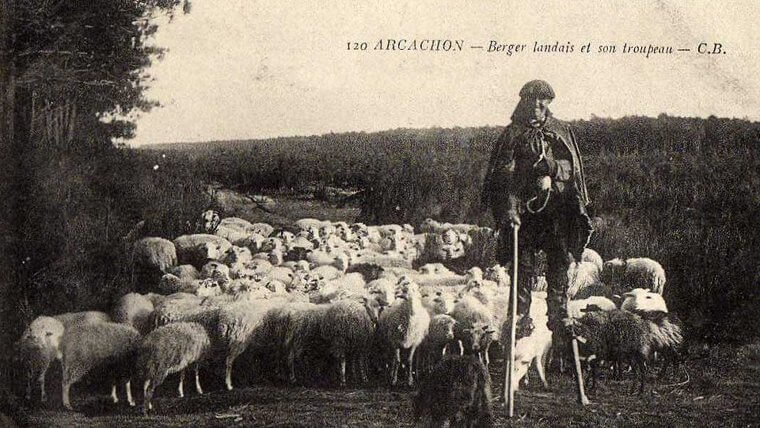
To remedy this problem, shepherds wore stilts to keep their feet dry. They also had a good view of the flock, up there. It was a two for one, and quite clever.
Ancient Roman Leather Shoes Are Actually Really Stylish
We think that our modern fashion is a new look, each and every decade. But the truth is that trends repeat. And some designs have just been around forever, like since ancient times. We are talking about shoes today, and we love these old Roman designs. The craftsmanship was done in real leather, and we think they look a lot like what we see in stores today. They look pretty couture, frankly.
On the left, we see an open weave model. On the right, we see a closed shoe with an intricate cutout pattern all around the sides. They just don't make flats that last 2,000 years, these days.
We Wish The MonoWheel Lasted as an Invention
This transportation was all the rage in 1931 when this picture was taken. It's called the monowheel, and it was a lot better than a unicycle. Instead of sitting on top of a single wheel, the rider would sit inside it. That seems a lot more comfortable, and it also looks incredibly whimsical. We would have been proud to wheel around in style, on this thing. But sadly, this pedal-powered marvel didn't stick around.
Later models were motorized, which really took things up a notch. If they exist at all today, it's probably in the circus. But once upon a time, this was a serious wheel!
This F-16 Got Its Wing Shot off and Still Flew Back to Base
We've all had nightmares where a plane is going down, and there's no escape. That's a worst-case scenario that almost never happens in real life, thankfully. Air travel is statistically safer than driving on our roads. But once in a blue moon, the unthinkable occurs. Here, we have a photo of a miracle: This F-16 had its wing smashed off in mid-flight. Somehow, it managed to land safely!
During a training exercise, there was a collision with another jet. That pilot ejected safely. The second student made it all the way back to base, incredibly. The damage was 2 million bucks, which is no small fender bender.
Ancient Chinese Warriors Juggled to Intimidate the Other Side
China is a very old civilization that has been perfecting the art of war for thousands of years. A general named Sun Tzu even wrote a book on that. Which battle was the most impressive? No opinion about that, here. Today, we're just going to share a tidbit about their tactics. Ancient Chinese warriors freaked out the other side by juggling. For example, during a battle in 603 BC, warrior Xiong Yiliao started juggling 9 balls.
What happened next? Amazingly, 500 enemy troops ran away from him. We think juggling is impressive, too. But we had no idea it held such awesome power on the battlefield!
The Head of Henry IV of France Went Missing and Started Rumors
Historically, France had good times and bad. But we do notice a lot of beheadings. That's how the French get angry, on occasion! King Henry IV, for example, wanted there to be religious freedom. But some hated that idea, and they assassinated him. When another revolution occurred centuries later, there were more zealots on the march. This time, they executed lots of people in Paris. And they also unearthed corpses!
A mob ransacked the chapel where Henry was buried and grabbed his head. Ever since then, no one knows what happened to it. Extra heads keep popping up alleged to be his, but no one could say for sure. One was bought at an auction in 1919 for 3 francs. But it might have just been an ordinary head. Sad times!
You Won't Find Latitude or Longitude in a Medieval Atlas
We are glad we understand the world is a big, blue ball. Remember when people thought the world was flat? We certainly know more now, but maps weren't always interesting in school. We do like seeing old maps, though. Check out this Medieval Atlas, from 1375. They're really trying their best to figure it all out with trade routes. But something is missing! Where is all the latitude and longitude?
There was a time when these concepts were not part of that guide. But still, this is a pretty decent outline of where things are in the world. Hopefully, no one got too lost!
The First Roman Kid's Book Had Some Very Mature Suggestions
Getting kids to read in the era of videos games and tablets is no easy task. But for many years, people didn't even have electricity. Books were the entertainment of choice if you wanted to sit down and stimulate your mind. Historians have uncovered a children's illustrated book from ancient Rome, believed to be the first in history. The content is a little surprising, to say the least. What kind of topics were covered for the youngsters?
Well, there were recipes, but it wasn't for cookies. Roman kids read about recipes for beer and wine-making. We know the water was dirty back then. Maybe that explains it?
This Mask Was Worn by the Elite Roman Cavalry
Many still study the glory of Rome today, because frankly, there is a lot to learn. It's where we got our Washington D.C. architecture and the concept of a senate. How did they think of all that stuff? And how did they dominate most of the world? Their military strategies are analyzed by war students even now. But the question is, have they seen this awesome mask?
This faceguard was worn by elite cavalry. It wasn't during battle, of course. That would have been too cumbersome. But it was something they donned during parades. We like the look!
This 1,000 Year Old Monastery Is Situated Surprisingly High up
Buddha-curious travelers often to go India to see its temples and statues. The 1,000 Year Old Kee Monastery is actually still working, and it's not so easy to find on a hike. It has survived all kinds of chaos, perhaps because it is situated 13,668 feet above sea level. It was attacked by invaders repeatedly over the centuries and suffered damage each time. Yet, it survived. It was ravaged by a fire and an earthquake, in recent times.
Over and over, it was repaired. It is the oldest monastery of the Spiti Valley, and it doesn't seem to be going anywhere. Today, it still trains around 250 monks all year round.



